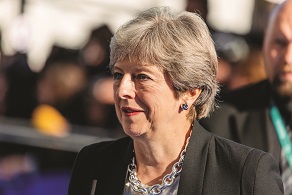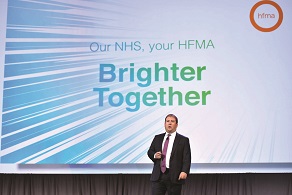Prime minister outlines new funding and financial tests
In mid-June, prime minister Theresa May announced that NHS funding would rise to around £149bn by 2022/23 – £20.5bn, or an average of 3.4% more per year, in real terms. The real-terms increase will be 3.6% in 2019/20 and 2020/21, followed by 3.1%, 3.1% and 3.4%.
The overall figure also includes £1.25bn a year to cover additional pension costs, due to an increase in employers’ contributions.
Speaking at a Commons Public Accounts Committee hearing, NHS England chief executive Simon Stevens said that, when the £1.25bn is included, real-terms growth in 2019/20 will be nearer 4.6%.
The devolved nations will receive additional funding through the Barnett formula. The figures are yet to be confirmed, but Scotland is likely to be given an extra £2bn in real terms by the end of five years, Wales around £1.2bn and Northern Ireland £600m. This money is not ringfenced for health – it is up to the local administrations to decide how it is spent.
In England, the additional funding will be linked to a 10-year plan – to be developed by the NHS – and five new financial tests. The plan, due in November, will focus on four areas: workforce, technology, buildings and productivity.
Mrs May said: ‘This must be a plan that ensures every penny is well spent. It must be a plan that tackles waste, reduces bureaucracy, and eliminates unacceptable variation, with all these efficiency savings reinvested into patient care. It must be a plan that makes better use of capital investment to modernise its buildings and invest in technology to drive productivity improvements. It must be a plan that enjoys the support of NHS staff across the country.
‘But NHS leaders at national and local level must then be held to account for delivering this plan,’ she added.
Accountability will be delivered through the five financial tests:
- Improve productivity and efficiency
- Eliminate provider deficits
- Reduce unwarranted variation
- Get better at managing demand effectively
- Make better use of capital investment.
It is likely this will lead to a greater focus on RightCare, the Model Hospital, the use of the provider sustainability fund and sustainability and transformation partnerships’ capital plans.
The NHS has also received an additional £800m in its 2018/19 baseline, to cover this year’s costs associated with the new Agenda for Change pay deal in England.
Mr Stevens said that on a like-for-like basis NHS funding growth is around 3.1% this year – including the pay deal funding – compared with 3.6% next year.
As well as the new funding, the government confirmed several other points. It will consider a multi-year capital plan to support transformation and multi-year funding plan for clinical training. And the green paper on social care, due this summer, will now be published in November.
Although it welcomed the increased funding, the HFMA said it was below the long-term average of 3.7%. HFMA chief executive Mark Knight said: ‘The extra cash will help address current shortfalls, but it is unlikely to be sufficient to meet ever-increasing demand, support the transformation and integration of services, and improve services such as cancer and mental health.
‘We look forward to seeing additional detail supporting the announcement, including the impact on the wider health budget. But it looks like the NHS is not out of the woods. Difficult choices will have to be made – not only about how the new funds should be spent, but the entirety of the NHS budget.’
Nuffield Trust chief executive Nigel Edwards said the increase was less than the 4% needed to prevent a deterioration in patient care. ‘Because it doesn’t apply to the whole Department for Health and Social Care budget, it leaves out spending on things like training staff, building hospitals and public health. It appears that the real figure for all spending on healthcare will be lower, closer to 3%.’
President heads to US HFMA

HFMA president Alex Gild addressed the US HFMA’s annual conference in Las Vegas at the end of June. The conference, Leading and inspiring the business of healthcare, brought together several thousand healthcare finance professionals from across the US and looked at issues such as reducing the total cost of care; business intelligence and analytics; and payment trends and models.
Related content
We are excited to bring you a fun packed Eastern Branch Conference in 2025 over three days.
This event is for those that will benefit from an overview of costing in the NHS or those new to costing and will cover why we cost and the processes.